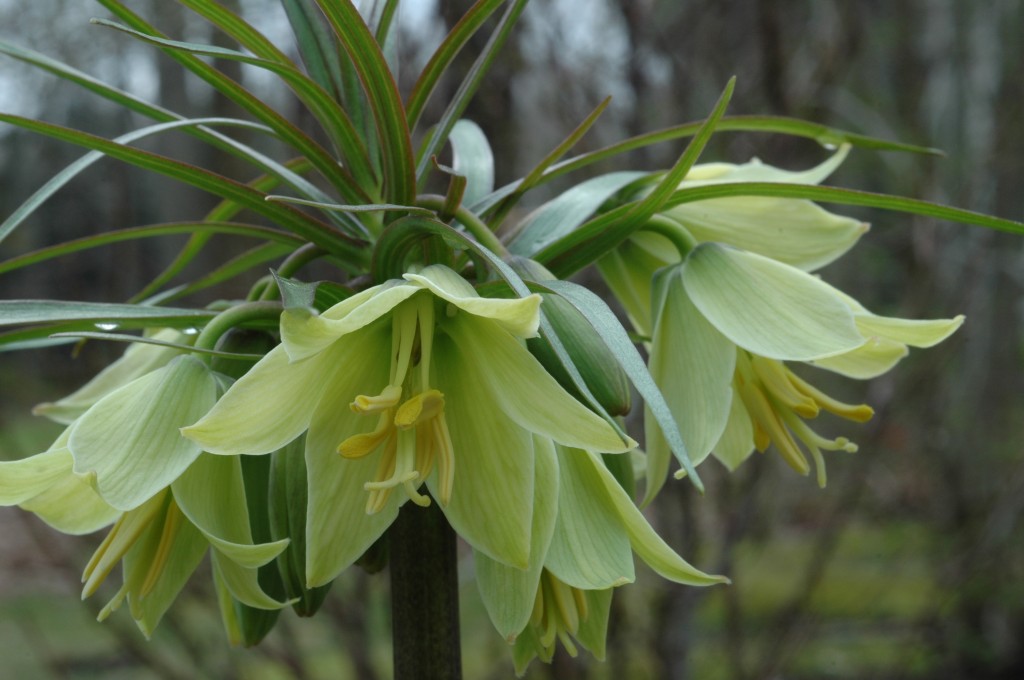 As you suspected all along, I’m a pushover. Why did I imagine that I could host a blog that rates plants? I’m incapable of criticizing anything. Even if I think that something doesn’t live up to my expectations, five minutes later I’ve found some reason why I’m crazy about it. Usually I’ve found 5 reasons why I’m beguiled by it. Fritillaria raddeana is a good example.
As you suspected all along, I’m a pushover. Why did I imagine that I could host a blog that rates plants? I’m incapable of criticizing anything. Even if I think that something doesn’t live up to my expectations, five minutes later I’ve found some reason why I’m crazy about it. Usually I’ve found 5 reasons why I’m beguiled by it. Fritillaria raddeana is a good example.
A big drum roll preceded the blooming of F. raddeana. First of all, it’s precocious. Hardly anything was happening when it first broke ground and then rushed up into bud with breakneck speed. So all eyes were on this flower (or more correctly — cluster of flowers). With a decided lack of competition, it was pretty much the only game in town. But when it opened, it had a hard time living up to expectations.
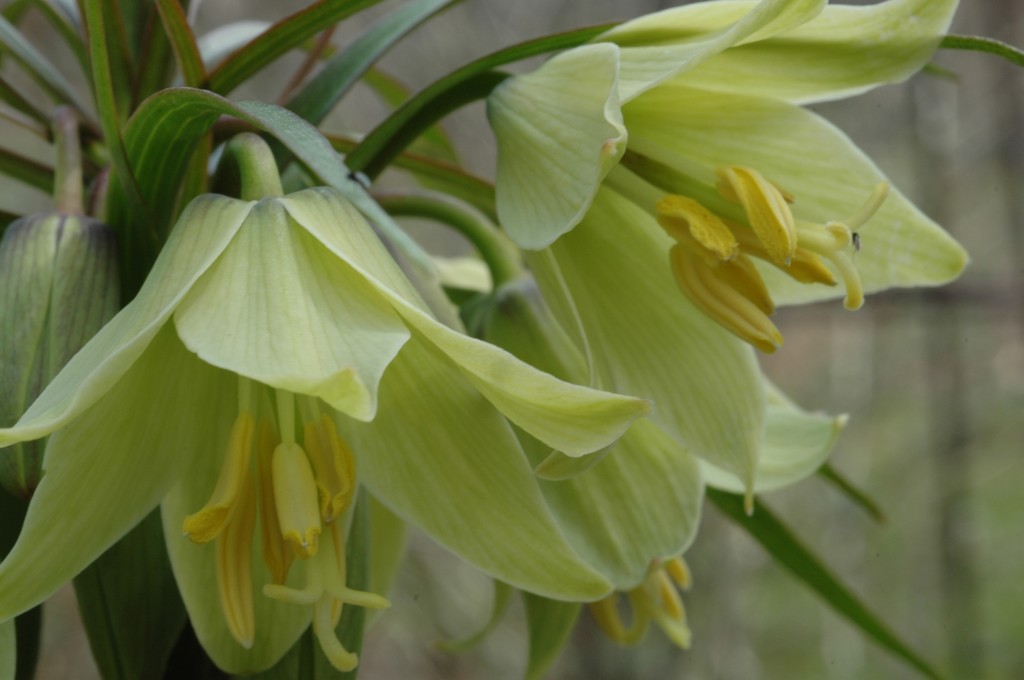 I wasn’t impressed at first. Underwhelmed might pretty much sum it up. The flowers are sort of greenish. In fact, it’s easy to miss F. raddeana in the greater scheme of spring unfolding. The flowers are about the size of F. meleagris, and my one-year-old bulbs didn’t have anything close to the 20 bell cluster in the catalog description. I was grumbling, I admit. But then it grew on me (you saw this coming, didn’t you?). And pretty soon, I was thinking that I should purchase more F. raddeana this autumn. In the final analysis, I decided that the only thing wrong with F. raddeana is that I don’t have enough of it to make a rip roaring display.
I wasn’t impressed at first. Underwhelmed might pretty much sum it up. The flowers are sort of greenish. In fact, it’s easy to miss F. raddeana in the greater scheme of spring unfolding. The flowers are about the size of F. meleagris, and my one-year-old bulbs didn’t have anything close to the 20 bell cluster in the catalog description. I was grumbling, I admit. But then it grew on me (you saw this coming, didn’t you?). And pretty soon, I was thinking that I should purchase more F. raddeana this autumn. In the final analysis, I decided that the only thing wrong with F. raddeana is that I don’t have enough of it to make a rip roaring display.
Okay, here’s F. raddeana‘s attributes:
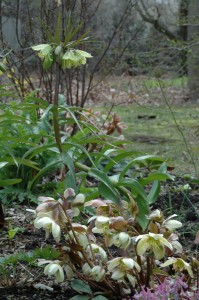
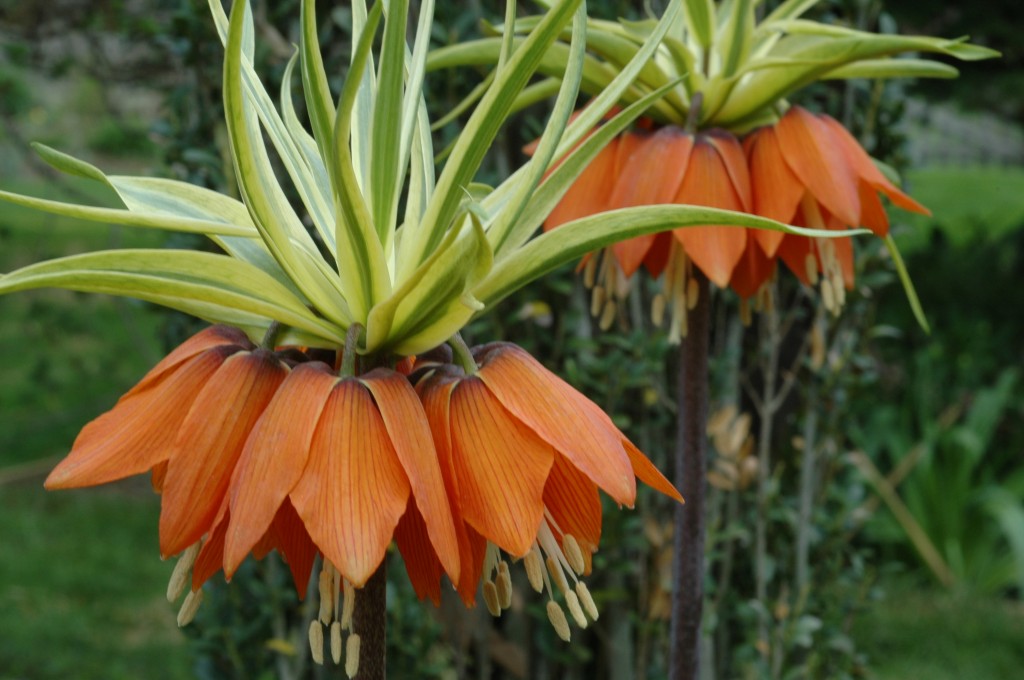 There was no hard frost after Fritillaria raddeana began to emerge, so I can’t attest to its fortitude against sub freezing temperatures. But it’s definitely a keeper and will probably be increased. That said, Fritillaria raddeana doesn’t have the shock appeal of Fritillaria imperialis (the Big Stinker). Granted, it’s hard to compete with a flower that parades around with a crazy, stark raving orange headdress in spring. A friend has the variegated version which is the ultimate crowd pleaser. It knocks all of the competition out of the water. So I’m jaded. But weigh in. Compare the goods. What’s your verdict?
There was no hard frost after Fritillaria raddeana began to emerge, so I can’t attest to its fortitude against sub freezing temperatures. But it’s definitely a keeper and will probably be increased. That said, Fritillaria raddeana doesn’t have the shock appeal of Fritillaria imperialis (the Big Stinker). Granted, it’s hard to compete with a flower that parades around with a crazy, stark raving orange headdress in spring. A friend has the variegated version which is the ultimate crowd pleaser. It knocks all of the competition out of the water. So I’m jaded. But weigh in. Compare the goods. What’s your verdict?
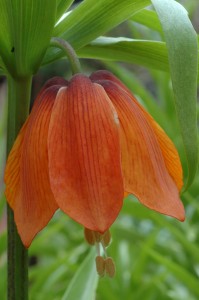 By the way, has anyone seen a crown imperial with just one single flower nodding from its topknot? This is a seedling that came up in a friend’s garden. Could it be an oddity?
By the way, has anyone seen a crown imperial with just one single flower nodding from its topknot? This is a seedling that came up in a friend’s garden. Could it be an oddity?
